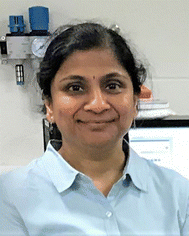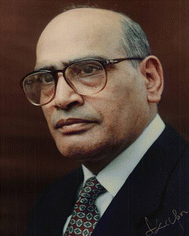 Open Access Article
Open Access ArticleCreative Commons Attribution 3.0 Unported Licence
Introduction to “Shaping the future using thin films and nanotechnology”
Aruna
Ivaturi
 *a and
Oomman
Varghese
*a and
Oomman
Varghese
 *bc
*bc
aSmart Materials Research and Device Technology Group, Department of Pure and Applied Chemistry, University of Strathclyde, Glasgow G1 1XL, UK. E-mail: aruna.ivaturi@strath.ac.uk
bNanomaterials and Devices Laboratory, Department of Physics, University of Houston, Houston, Texas 77204, USA. E-mail: okvarghese@uh.edu
cTexas Center for Superconductivity, University of Houston, Houston, Texas 77204, USA
Thin film technology is both the predecessor and contemporary to present-day nanotechnology with a significant overlap in the functions and applications. It is one of the oldest technologies with a history of several millennia, yet affecting the daily lives of people around the world through its presence in numerous applications linked to their routine activities. Microprocessor, the heart of a computer, is an example of such an application. Solid thin films are formed by controlled atom-by-atom deposition of materials and, therefore, it is a bottom-up technology. Typical thickness ranges from tens of microns to sub-nanometer scale (a partial monolayer of atoms), a length scale that encompasses micro, nano and quantum materials. In the low dimensional regime, thin film technology merges with nanotechnology in developing novel materials and devices with unique characteristics that could shape the future of the world with game changing technologies aimed at sustainability and improving the quality of life.
While the modern thin film technology has its roots in the development of vacuum technology in the 17th century and the scientific and industrial revolutions in the following centuries, it became a synonym for device miniaturization with the emergence of semiconductor devices in the second half of the 20th century. One of the legends who made pioneering contributions to the development of thin film technology during this era is Padma Shri Professor Kasturi Lal Chopra (1933–2021). After receiving BS and MS degrees from India, Professor Chopra spent several years in Canada, Europe and the United States initially as a doctoral student and then as a scientist in research institutions and industry. His book “Thin Film Phenomena” is still a standard reference for the science and technology of thin films. Later, he returned to India, and established the Thin Film Laboratory at the Indian Institute of Technology Delhi (IITD), India, which became a breeding ground for many accomplished scientists, technologists and entrepreneurs. Because of his seminal contributions to the science and technology of thin films and nanomaterials, Republic of India honoured Professor Chopra with “Padma Shri”, the 4th highest civilian award in the country. This themed collection, established in honour of Prof. Chopra, features peer reviewed contributions from the participants of the 1st International Conference on Thin Films and Nanotechnology: Knowledge, Leadership and Commercialization (ICTN-KLC 2021).
The ICTN-KLC 2021 conference was organised by the alumni of the Thin Film Laboratory, Department of Physics, IITD, India to carry forward the legacy of Prof. Chopra in motivating and nurturing young students to become dedicated scientists, leaders and entrepreneurs, contributing to society via scientific discoveries, the development of ground breaking technologies, and commercialization. The ICTN-KLC 2021 meeting brought together students, academicians, scientists, technologists and entrepreneurs working on the development and applications of thin films and nanomaterials from laboratory to industry. In addition to scientific talks, the conference included sessions dedicated to research ethics, leadership and entrepreneurship primarily for the benefit of early career researchers.
The articles in this themed collection cover various nanomaterials and thin films applicable for a range of areas with pivotal roles in shaping the future of the world. For example, quantum dots (QD) have changed the landscape of displays and solid-state lighting. A review article in this collection takes the readers through physics of QDs, synthesis techniques, applications in light emitting diodes (LED), lasers, displays and data communications along with challenges that still need to be addressed. Similar to the role of LEDs in revolutionizing the lighting industry, fuel cells and solar cells are two technologies critical to a transition in the energy system. Solid oxide fuel cells are efficient electrochemical energy conversion devices that produce electricity directly by oxidizing fuels such as hydrogen and hydrocarbons. An article in the collection discusses development of novel nickel oxide–gadolinium doped ceria nanowires grown using a vapor–liquid–solid mechanism aiming at device miniaturization and temperature reduction. A theoretical study giving insights into light induced quasi Fermi level splitting, which is a measure of the open circuit voltage in a solar cell, in ternary blends of molecular semiconductors is also in this collection.
Supercapacitors are widely explored as electrochemical energy storage devices. A work published in the themed collection showed that, as a supercapacitor electrode, nanoscale tungsten sulphide (WS2) prepared via a single-step hydrothermal route could perform better than stoichiometric and non-stoichiometric tungsten oxide (WO3) synthesized using the same method. In another study, nanoporous WO3 fabricated using polystyrene as an intermediate layer in the sol–gel processing showed enhanced electrochromic cycling stability for application in smart electrochromic windows for energy saving.
Nanocomposites of acid-etched g-C3N4 nanosheets and polyaniline nanofibers were reported to be effective in photocatalytically remediating water contaminated with textile dyes. Another study indicated that a nano-cage structure in Ag–TiO2 thin films would enable it to serve as an effective surface enhanced Raman spectroscopy substrate for ultra-trace level polluting dye detection.
Highly crystalline zinc oxide (ZnO) nanorod films fabricated using a template-free chemical deposition method could be used as an active material for ultraviolet light detection. It was also demonstrated that selenium nanoparticles embedded between a silicon nitride blocking layer and a silicon dioxide tunnelling layer on a silicon substrate could be used as a non-volatile electronic memory device for information storage. UV detectors and non-volatile electronic devices find use in a number of sectors including healthcare.
We thank all the authors for their contributions to this themed collection. We express our gratitude to the editorial staff of Materials Advances for their support.
| This journal is © The Royal Society of Chemistry 2023 |



